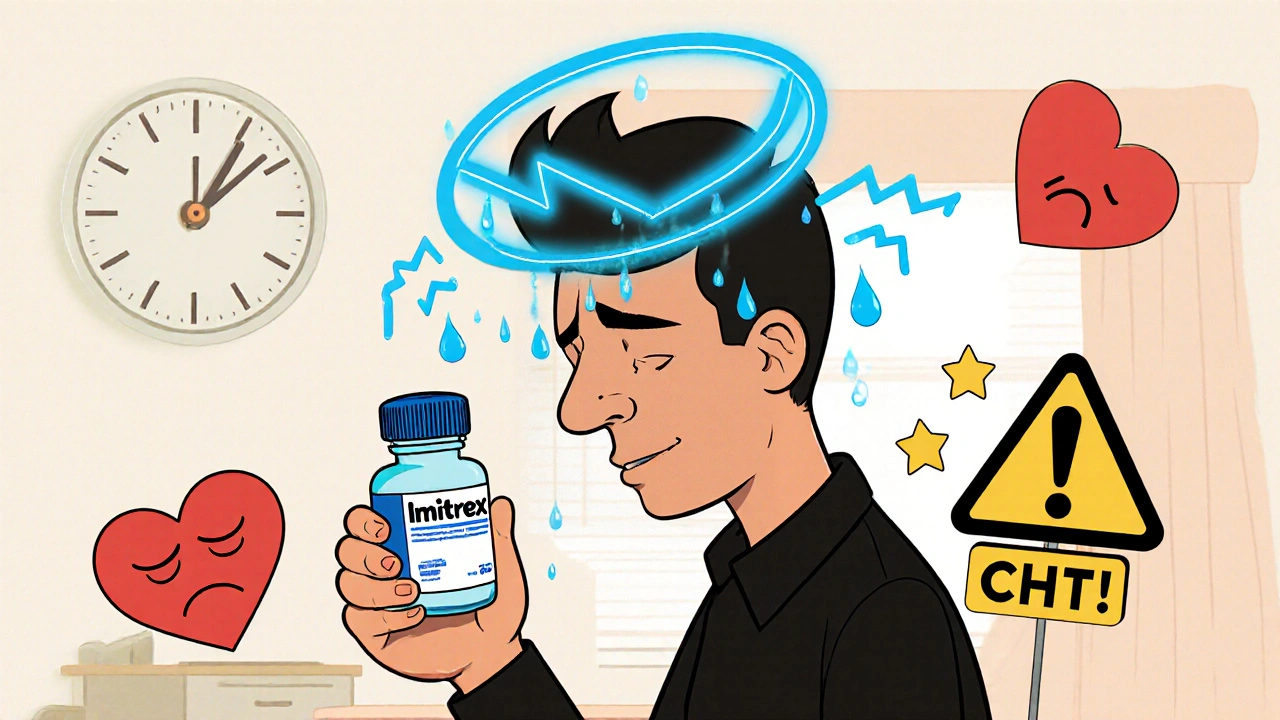Imitrex (sumatriptan) helps many with migraines, but it doesn't work for everyone. Discover effective alternatives like other triptans, CGRP blockers, and combination therapies that offer relief without the side effects.
Triptans: What They Are, How They Work, and What You Need to Know
When a migraine hits hard, triptans, a class of prescription drugs designed to stop migraine attacks by narrowing blood vessels in the brain and blocking pain pathways. Also known as serotonin receptor agonists, they’re not painkillers—they’re migraine-specific tools that stop the attack in its tracks. If you’ve ever been knocked out by a throbbing headache, nausea, and light sensitivity, triptans might be the reason you got back on your feet.
Not all triptans are the same. sumatriptan, the first and most widely used triptan, comes in pills, nasal sprays, and injections. Others like rizatriptan, known for fast action, and eletriptan, praised for long-lasting relief, give you options based on how your migraines behave. Some work better for nausea, others for speed, and a few are easier on the stomach. Your doctor picks one based on your history—not just the headache, but how often they hit, how long they last, and what other meds you take.
Triptans don’t prevent migraines. They’re for when the storm hits. You take them at the first sign—tingling, flashing lights, or that familiar pressure behind the eye. Waiting too long makes them less effective. And while they’re safe for most people, they’re not for everyone. If you have heart disease, high blood pressure, or a history of stroke, your doctor will likely skip triptans and suggest something else.
Side effects? Mild ones are common: warmth, tingling, dizziness, or a tight feeling in the chest. These usually fade in minutes. But if your chest hurts badly, your throat closes up, or you feel faint, stop and get help. These are rare, but serious. Also, don’t mix triptans with certain antidepressants like SSRIs or SNRIs without talking to your doctor—it can trigger serotonin syndrome, a dangerous spike in brain chemicals.
What you’ll find below is a collection of real-world insights from people who’ve used these drugs, doctors who prescribe them, and studies that show how they stack up against other treatments. You’ll see how generic versions compare to brand names, why some people get relief in 20 minutes while others wait an hour, and what to do when triptans stop working as well as they used to. There’s no marketing fluff—just facts about what works, what doesn’t, and what you should ask your doctor next time you refill your prescription.

